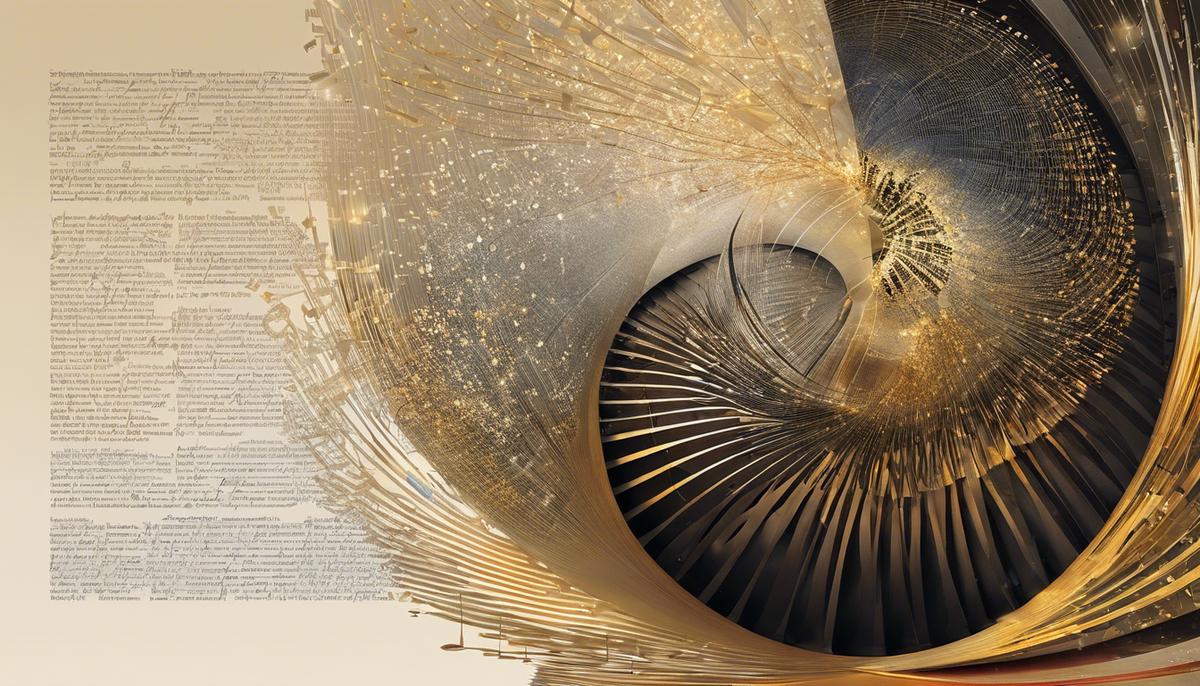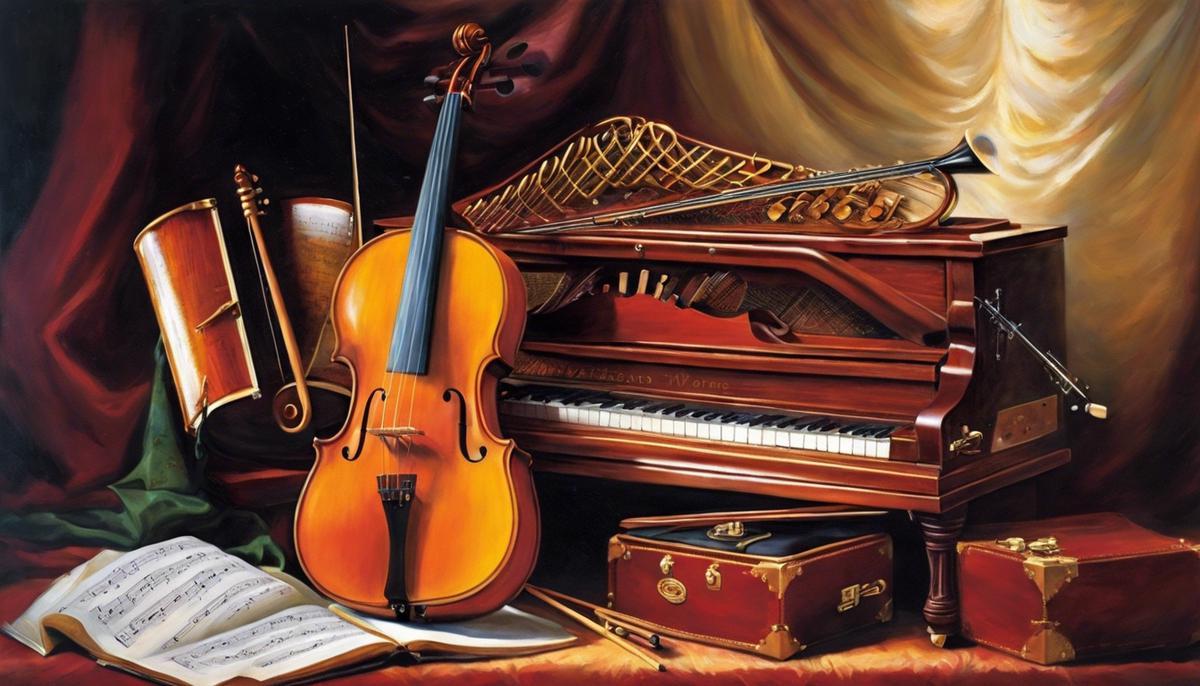Just like a beautifully composed symphony, where every note is poured in a perfect balance to create a harmonious melody, electrical systems too rely upon the intricate and often delicate balance of impedance. Yet, much like a discordant note disrupting the fluid harmony of a composition, mismatched impedance can disrupt the smooth flow of electrical signals in a system. In this exploration, we dive deep into the often overlooked territory of mismatched impedance. Through metaphors borrowed from the realm of music, we elucidate the concept of impedance, its mismatch and the impacts it holds on signal quality.
Understanding Mismatched Impedance like a Composition
Strands of sound and waves of melody course through the veins of our existence and reverberate in the hall of harmonies, creating an intricate symphony that we call music. Each note, each timbre carries with it a power as equally potent and delightful as the stroke of a painter’s brush on a canvas, or a sculptor’s chisel on stone.
When music lovers dip into the vast ocean of aural beauty, they often find themselves standing at the precipice of an enigma as they face the myriad details and complexities that make up a well-composed music piece. Just like any other form of art, the understanding and appreciation of music is embedded in a deep comprehension of its myriads intricacies, a journey of discovery that requires patience, passion, and a keen ear for detail. A striking analogy for this would be the concept of mismatched impedance, which is frequently misunderstood yet has paramount importance in the arena of sound engineering.
In the realm of electronics, impedance is pivotal to ensure the proper functioning of a device. The concept of mismatched impedance arises when the output and input impedances of a circuit or a device are not in harmony. This, in turn, leads to a loss of power, distortions, and inefficiencies that inhibit the device’s performance, the same way melodic discordance can obstruct the flow of a symphony or a jarring note can mar the beauty of a melody.
Appreciating a complex music piece is akin to understanding the concept of mismatched impedance – both requiring a fine balance of harmonious elements, be it electronic impedances or musical notes, to deliver intended power, emotion, or message. A seasoned music enthusiast, like an adept sound engineer, listens for this balance, detects any discrepancies, and in the process, gains a deeper appreciation and understanding of the artistry involved.
In a well-crafted piece of music, notes don’t just follow one another willy-nilly. Instead, they flow in a meticulously crafted order that creates a sonic landscape for the listener, invoking emotions, painting vivid pictures, or sometimes, leading them on thrilling auditory journeys. It takes time, effort, and an acute sense of perception to comprehend the refined details in a piece of music, just like it takes a keen understanding of electrical circuits and their components to accurately conceive the complexities of mismatched impedance.
While in the world of sound engineering, dealing with mismatched impedance is a formidable challenge, in the sphere of music, grappling with an intricate piece isn’t a hurdle but a joyous exploration. Every note or chord arrangement, every nuance in tone or tempo hopping in your ears is a step towards voyaging deeper into the brilliance of the artist’s imagination.
This parallel teaches a valuable lesson. A symphony is not just a collage of sounds – it’s a universe unto itself with constellations of notes, galaxies of melodies, and nebulas of instruments. When one apprehends this, much like when an engineer masters the concept of impedance, the reward is a depth of understanding that enhances the experience. A symphony then becomes not just a river of notes, but a compelling narrative, a rich tapestry of emotions, and a potent conduit for connection.
And for the ones who are curious, music only gives the more you dive in. It opens its arms and welcomes you into its depth, much like the subtle complexities of mismatched impedance rewards an inquisitive engineer. And it is in this unhindered dive, one finds the marrow of music and the very essence of life itself – a splendid harmony amid seeming chaos!

Implications of Mismatched Impedance to Sound Quality
In the ethereal symphony of sound that paints our favorite tunes, every subtle nuance adds color and texture, creating the intricate tableau we call music. Yet, much like creating a masterpiece in paint or pen, there’s a technical side to crafting these auditory wonders that often goes unseen, yet greatly influences the final product – the harmony of the impedance in electronic circuits.
Matching impedances is akin to matching tones or rhythmic patterns in music. Even the most abstract sonic creations, those that bend genres and bring forth new textural landscapes, adhere to some form of harmony and balance. As much as music is about ingenuity and pushing boundaries, it’s equally about balance and resonance. Equivalently, impedance, a complex concept in electronics, is all about the symphony of harmonizing voltages and currents. And, a mismatch here, could lead to the distortion of our favorite rhythms.
This symphony of circuits is no different from your favorite rock concert or orchestral performance; everything must be in tune, from the strings of the lead guitar to the electricity coursing through the amplifiers. If the stages of a sound system – amplifiers, cables, speakers – aren’t harmonized, akin to an orchestra playing off-key, the music emanating from your speakers may sound distorted or lacking the vibrancy it was composed with.
Consider an epic symphony orchestra, where each instrument plays a crucial part in weaving the grand musical narrative. If one instrument is out of tune – be it a brass trumpet blaring the wrong note or a cello losing its rhythm – the entire symphony is affected: ripples of discord run through the melody, turning harmony into cacophony. Consequently, mismatched impedance works in a similar way, skewing sound waves and causing an audio system to perform less optimally, turning a bass thump into a tinny echo, a soprano’s high note into screeching feedback.
The musical notes that comprise our beloved tunes are much like the waveforms in an electronic circuitry. When all notes play together in perfect harmony, we are bestowed with a musical piece that stirs the strings of our hearts. Conversely, mismatched impedance can inadvertently pluck the wrong strings, turning beautiful strains into a discordant uproar, much to the chagrin of the discerning listener.
Mechanizing the flow of electricity from source to output in the same way a composer or band directs the progression of their music, impedance matching ensures the cohesion, synchronization, and harmony essential to a smooth performance. Much like a great tune, the electrons journey smoothly along the route laid out for them, yielding a full, rich sound.
Ultimately, the symphony of our favorite tunes is not only about the artist, the instrument, or the lyric, but also about harmonious circuitry that respects and adheres to the principle of impedance matching. Failing to match impedance could turn our power ballads into powerless ballads and our rocking riffs into rackety noise. Thus, the musical journey is not just one of expression and appreciation, but also of diligence in understanding and respecting the harmony within the unseen element of electronics – an unsung hero orchestrating a matchless experience for our music-loving hearts.
Let the fascinating journey to unravel the mysterious charm of impedance continue in every music lover’s exploration. It may be complex, technical and sometimes hard to comprehend, but the rewards are unmistakably part of the greater harmony of the sound we love. Enjoy music in all its richness and remember, in the symphony of life, every note, every chord, every beat and every electron counts. The beauty exists in the harmony and everything that contributes to it. So, next time you press play, remember the unsung heroes – the technicalities, such as impedance – that make your favorite tunes pop, and you might just appreciate them a little more.

Addressing Mismatched Impedance: A Symphony Restored
Soothing melodies enticing the senses. Mesmerizing harmonies tantalizing the soul. Therein lay the true essence of music— the celestial acoustics that plunge you into realms unexplored, the orchestra of frequencies which narrate tales unheard.
Having marveled at the marvel that is music, an intriguing concept now presents itself for further scrutiny: matching impedance, akin to finessing the balance of harp’s chords.
Impedance is a measure of opposition to the flow of electric current in a circuit. Like the rhythm section of a band, it maintains the steady rhythm of electronic flow in a sound system. It’s crucial to align impedance perfectly within a sound device – just as it’s essential to balance the ensemble of notes in a harmonious melody. Translate this into the language of music, and the result is akin to tuning a guitar perfectly or aligning the keys of a piano.
Mismatched impedance is the discordant note in the concert of audio playback, creating cacophonous static or muddled distortions that tarnish the melody. This can hobble a sound system just as a faulty violin can mar an orchestra.
Consider a symphony orchestra, every instrument meticulously calibrated to contribute to the haunting beauty of the whole. A flawlessly functioning sound system is akin to this orchestra, each of its components in perfect balance with the others. Similarly, waveforms play pitches in electronic devices that would resonate harmoniously in a symphony of notes, intertwining perfectly in the symphony of music.
An overheated amplifier or a blown speaker, the consequence of impedance mismatch, disrupts the symphony. It’s akin to a cracked guitar string or an out-of-tune piano in an orchestral performance. The result: a marked compromise in the quality of the rendered art.
What can be more disheartening to a music enthusiast than the disruption of harmony, the disharmony in an otherwise delightful melody? The same perturbation is felt electronically when impedance doesn’t match in the heart of your audio equipment.
Impedance is a significantly complex technicality, like the profound nuances of a Bach suite or a Beethoven symphony. It’s their understanding that allows a discerning music lover or a skilled audio engineer to appreciate their respective magic.
Herein lies the bittersweet beauty of sound; the enchantment of a note, the importance of harmony, the subtlety of impedance, the finesse of electronic flow. These give music its soul, create its charm, and deliver its magic. This harmony gives music its power to unite, to enchant and to inspire.
Such is the enchantment of harmonious music, such is the power of perfectly matching impedance. For the lovers of music and magic, may the melody always charm you and the harmony forever enchant you. May the impedance never mismatch, and the harmony be eternally restored.

As we return from our enlightening journey through the realms of impedance mismatches, we carry with us a renewed respect for the precision required in engineering these electrical symphonies. We recognize that rectifying impedance mismatches is like restoring harmony to a discordant musical piece. Through the use of transformer based devices and impedance matching networks, we can fine-tune our equipment, creating symphonies of clear sound and efficient power transfer. As we conclude, remember that every piece of music, every symphony, owes its beauty to the precision with which it is composed, so does the optimal performance of any electrical equipment to the careful fine-tuning of its impedances.

Comments.
Currently there are no comments related to this article. You have a special honor to be the first commenter. Thanks!